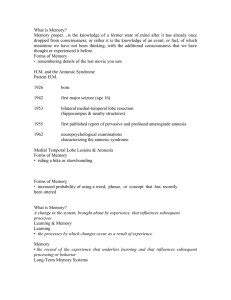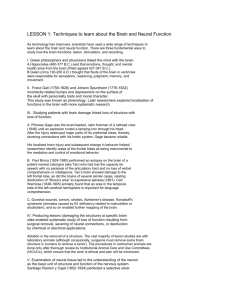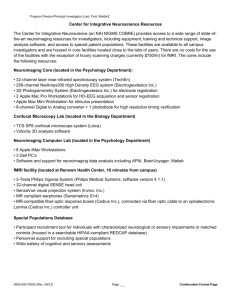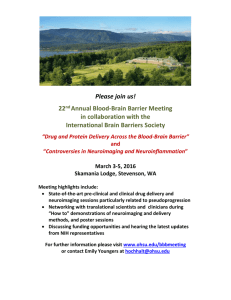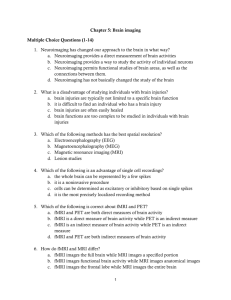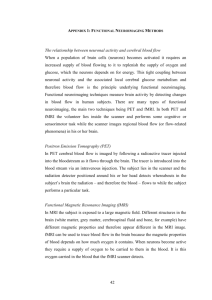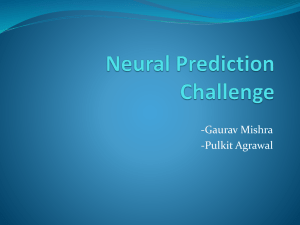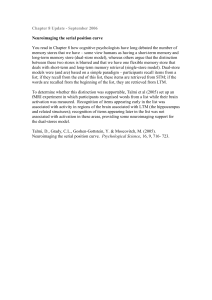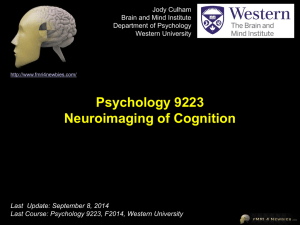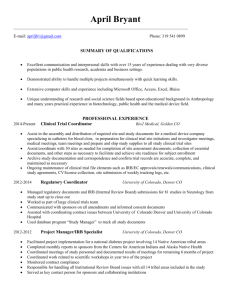Neuroimaging Tutorial
advertisement
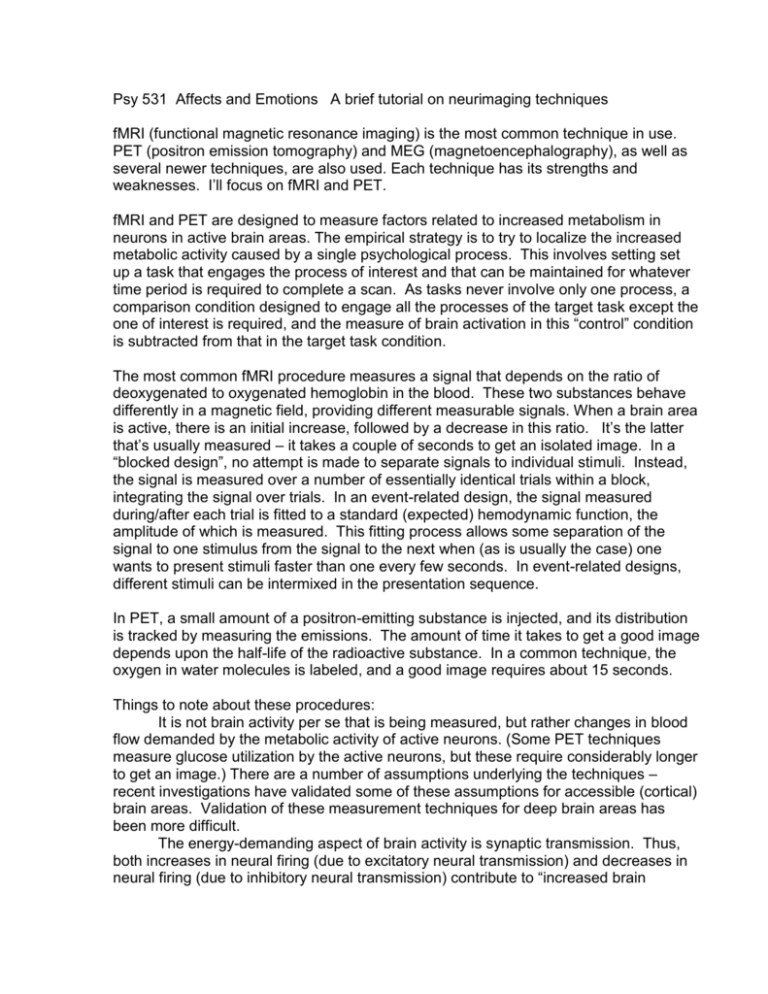
Psy 531 Affects and Emotions A brief tutorial on neurimaging techniques fMRI (functional magnetic resonance imaging) is the most common technique in use. PET (positron emission tomography) and MEG (magnetoencephalography), as well as several newer techniques, are also used. Each technique has its strengths and weaknesses. I’ll focus on fMRI and PET. fMRI and PET are designed to measure factors related to increased metabolism in neurons in active brain areas. The empirical strategy is to try to localize the increased metabolic activity caused by a single psychological process. This involves setting set up a task that engages the process of interest and that can be maintained for whatever time period is required to complete a scan. As tasks never involve only one process, a comparison condition designed to engage all the processes of the target task except the one of interest is required, and the measure of brain activation in this “control” condition is subtracted from that in the target task condition. The most common fMRI procedure measures a signal that depends on the ratio of deoxygenated to oxygenated hemoglobin in the blood. These two substances behave differently in a magnetic field, providing different measurable signals. When a brain area is active, there is an initial increase, followed by a decrease in this ratio. It’s the latter that’s usually measured – it takes a couple of seconds to get an isolated image. In a “blocked design”, no attempt is made to separate signals to individual stimuli. Instead, the signal is measured over a number of essentially identical trials within a block, integrating the signal over trials. In an event-related design, the signal measured during/after each trial is fitted to a standard (expected) hemodynamic function, the amplitude of which is measured. This fitting process allows some separation of the signal to one stimulus from the signal to the next when (as is usually the case) one wants to present stimuli faster than one every few seconds. In event-related designs, different stimuli can be intermixed in the presentation sequence. In PET, a small amount of a positron-emitting substance is injected, and its distribution is tracked by measuring the emissions. The amount of time it takes to get a good image depends upon the half-life of the radioactive substance. In a common technique, the oxygen in water molecules is labeled, and a good image requires about 15 seconds. Things to note about these procedures: It is not brain activity per se that is being measured, but rather changes in blood flow demanded by the metabolic activity of active neurons. (Some PET techniques measure glucose utilization by the active neurons, but these require considerably longer to get an image.) There are a number of assumptions underlying the techniques – recent investigations have validated some of these assumptions for accessible (cortical) brain areas. Validation of these measurement techniques for deep brain areas has been more difficult. The energy-demanding aspect of brain activity is synaptic transmission. Thus, both increases in neural firing (due to excitatory neural transmission) and decreases in neural firing (due to inhibitory neural transmission) contribute to “increased brain activity” as measured by these techniques. This is fine, because in the language of the brain, both increases and decreases in neural activity are meaningful. However, one must be careful not to conclude that an increase in the activity of a brain area detected by a neuroimaging technique necessarily means increased excitation of the neurons in that area. In addition, decreases in activity in a brain area are as meaningful as increases, but are sometimes not reported in neuroimaging papers. Temporal and spatial resolution Neuroimaging techniques are touted for their superior spatial resolution; electrophysiological techniques (such as event-related potential recording and some EEG techniques) are touted for their superior temporal resolution. That said, it is often very difficult for a non-expert reader to determine the spatial resolution of neuroimaging techniques, because doing so requires understanding of a number of details regarding the measurements per se and (especially) regarding the subsequent statistical treatment of the measurements. Details aside, neuroimaging skeptics point out that: (1) the spatial resolution is not good enough to differentiate known functional subdivisions of many areas. For example, the amygdala consists of a functionally heterogeneous group of nuclei, activity in which cannot be differentiated by current techniques (2) in all brain areas, there are circuits of neurons, presumably performing several different “computations.” A global measure of “activity” in the area provides little, or no, precise information about what these circuits are doing. Thus, an increase in metabolic activity could be generated by several different functional states of the circuitry within the neuroanatomical area (3) brains show considerable inter-individual variability in structure, and the “pictures” of functional activity for each participant must be aligned with a structural image in order to determine what neuroanatomically-defined brain areas are showing the activity. Although there are many ways to do this, debates about whether two studies are examining the “same” brain area have arisen even when the target area can in principle be identified by clear criteria. In this domain as in many others, one is on safest ground when examining areas involved in early stages of sensory processing or in late stages of motor programming. Finally, there are important differences, strategically and statistically, between studies that focus on activation in pre-identified brain areas (these are called “regions of interest” or ROIs) and those that examine all areas of activation (these are called fishing expeditions).

